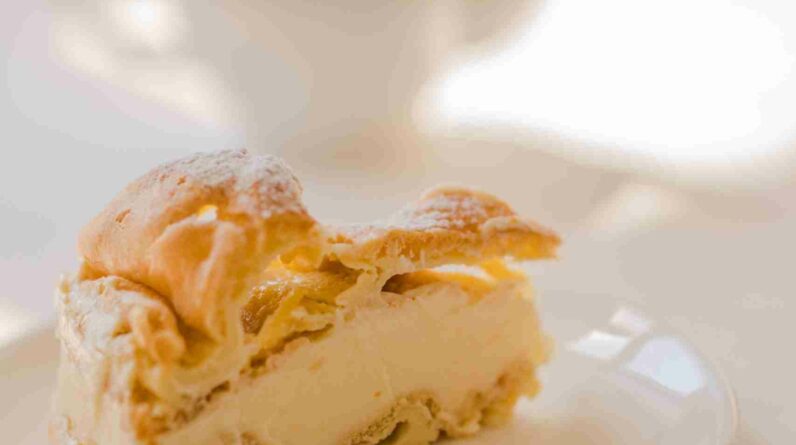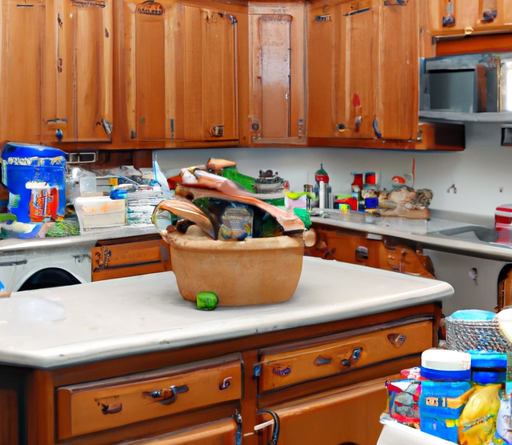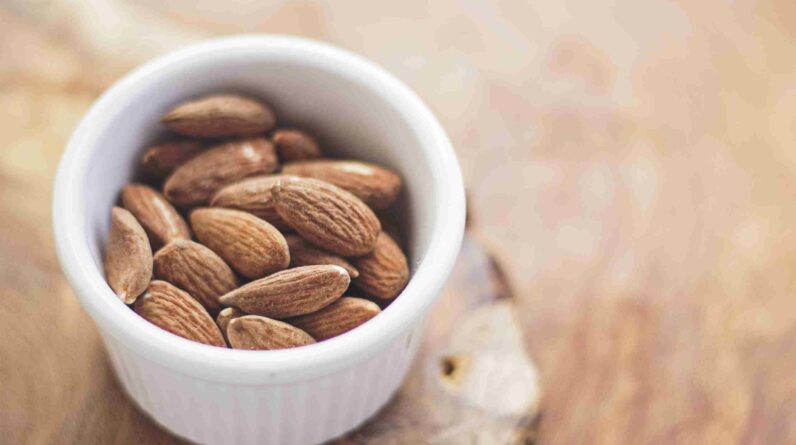Ladies and gentlemen, we find ourselves standing at the kitchen counter, faced with a beloved wooden cutting board stained with the remnants of our culinary adventures. But fear not, for we bring good tidings from the realm of cleanliness. In this article, we shall embark on a quest to discover the holy grail of cutting board cleanliness. Join us as we explore the various methods that have been whispered through the kitchen corridors, seeking the one true method that will leave our wooden cutting boards gleaming and odor-free. So, roll up your sleeves and sharpen your knives, for we are about to unlock the secrets of pristine cutting board hygiene.
Understanding the Importance of Cleaning a Wooden Cutting Board
The role of proper cleaning in preventing food contamination
Cleaning a wooden cutting board is of utmost importance when it comes to preventing food contamination. Wooden cutting boards are porous and can easily harbor bacteria, especially if not cleaned properly. These boards can absorb juices from raw meat, poultry, or fish, which can then become a breeding ground for harmful bacteria like Salmonella or E. coli. To ensure the safety of our food, it is crucial to clean the cutting board thoroughly after each use.
Maintaining the longevity and appearance of the cutting board
Not only does proper cleaning prevent food contamination, but it also helps in maintaining the longevity and appearance of the wooden cutting board. Regular cleaning prevents the buildup of food particles, stains, and odors, which can affect the overall lifespan of the board. Additionally, cleaning and conditioning the board also help preserve its natural beauty and prevent it from drying out or cracking over time. By taking good care of our wooden cutting board, we can prolong its lifespan and continue to enjoy its functionality and aesthetic appeal.
Choosing the Right Cleaning Agents
Avoiding harsh chemicals and abrasive cleaners
When it comes to cleaning a wooden cutting board, it’s important to avoid using harsh chemicals or abrasive cleaners. These can damage the surface of the board, strip away its natural oils, and leave behind harmful residues. Avoid cleaners that contain bleach, ammonia, or strong disinfectants. Instead, opt for gentle and natural cleaning agents that are safe for food contact.
Considering natural alternatives like vinegar, lemon, or salt
Natural alternatives like vinegar, lemon juice, or salt can be highly effective in cleaning and disinfecting a wooden cutting board. Vinegar is known for its antibacterial properties and can help kill germs and remove stains. Lemon juice acts as a natural bleach and deodorizer, making it ideal for removing stubborn odors. Salt can act as an abrasive agent to remove stains and grime. These natural alternatives offer a safe and economical way to clean our cutting boards.
Using mild dish soap and warm water for regular cleaning
For regular cleaning of wooden cutting boards, using mild dish soap and warm water is often sufficient. Start by rinsing the board with warm water to remove any loose food particles. Then, apply a small amount of mild dish soap and gently scrub the surface using a brush or sponge. Rinse thoroughly with warm water to remove any soap residue. This method is effective in removing most of the bacteria and food particles from the board’s surface.

Steps to Clean a Wooden Cutting Board
Step 1: Scraping off excess food particles
After each use, it’s important to scrape off any excess food particles from the wooden cutting board. Using a bench scraper or the back of a knife, gently remove any leftover food residue. This helps prevent the buildup of bacteria and makes the cleaning process more effective.
Step 2: Preparing a cleaning solution
Next, prepare a cleaning solution. If using vinegar, mix equal parts of white vinegar and water in a spray bottle. For lemon juice, squeeze the juice of one or two lemons into a bowl and add an equal amount of water. If using salt, sprinkle a generous amount on the board and add a few drops of water to make a paste.
Step 3: Applying the cleaning solution to the cutting board
Once the cleaning solution is prepared, it’s time to apply it to the cutting board. Spray the vinegar solution onto the board or pour the lemon juice mixture over the surface. If using salt, spread the paste evenly across the board. Ensure that the entire surface is covered with the cleaning solution.
Step 4: Scrubbing the surface with a brush or sponge
With the cleaning solution applied, scrub the surface of the cutting board using a brush or sponge. Pay close attention to any stained or heavily soiled areas. Scrub in circular motions, applying gentle pressure to remove any dirt or residues. Repeat this process until the board is clean and free from stains.
Step 5: Rinsing off the cleaning solution
After scrubbing, rinse the cutting board thoroughly with warm water to remove any traces of the cleaning solution. Ensure that all the soap, vinegar, lemon juice, or salt residue is fully rinsed off. This step is crucial to prevent any unwanted taste or smell from lingering on the board.
Step 6: Drying the cutting board properly
Finally, it’s important to dry the cutting board properly to prevent bacterial growth and warping. Pat the board dry with a clean towel or allow it to air dry in a vertical position. Avoid leaving the board flat on the countertop, as this can trap moisture and lead to the growth of bacteria. Proper drying ensures that the cutting board is ready for its next use.
Deep Cleaning Methods for Stubborn Stains and Odors
Using a paste of baking soda and water
For stubborn stains and odors that are difficult to remove with regular cleaning methods, a paste of baking soda and water can work wonders. Mix baking soda with a small amount of water to create a thick paste. Apply the paste to the stained areas and let it sit for a few minutes. Then, scrub the surface with a brush or sponge. Baking soda is a natural deodorizer and stain remover, making it effective in tackling tough stains and odors on wooden cutting boards.
Sanding the surface with fine-grit sandpaper
If the cutting board has deep stains or scratches that cannot be removed with cleaning agents, sanding the surface with fine-grit sandpaper can help. Start by wetting the sandpaper with water to prevent it from clogging. Gently sand the surface in the direction of the grain, paying attention to the stained or scratched areas. Be cautious not to sand too aggressively, as this can damage the board. After sanding, rinse off any residue and dry the board thoroughly.
Applying hydrogen peroxide to bleach out stains
Hydrogen peroxide can be used to bleach out stubborn stains on wooden cutting boards. Apply a small amount of hydrogen peroxide to a cloth or sponge and rub it into the stained areas. Allow it to sit for a few minutes, then rinse the board thoroughly with warm water. Hydrogen peroxide acts as a natural bleach and can help remove deep-seated stains. However, be cautious when using this method, as hydrogen peroxide may lighten the color of the wood over time.

Avoiding Common Mistakes in Cleaning Wooden Cutting Boards
Using excessive water that can warp or damage the board
One common mistake when cleaning wooden cutting boards is using excessive water that can warp or damage the board. While it’s important to rinse off the cleaning solution, it’s equally crucial to avoid soaking the wooden board in water for extended periods. Excessive water exposure can cause the board to warp, split, or develop cracks. It’s best to rinse the board thoroughly and dry it promptly to prevent any damage.
Not cleaning both sides of the cutting board
Another mistake to avoid is neglecting to clean both sides of the cutting board. Food particles and bacteria can easily transfer from one side to the other if not cleaned thoroughly. Take the time to clean and sanitize both sides of the board, paying close attention to any grooves or corners where bacteria can hide. By thoroughly cleaning both sides, we ensure that our cutting board is free from any potential contaminants.
Neglecting to regularly oil the wooden surface
Properly maintaining a wooden cutting board goes beyond just cleaning it. Neglecting to regularly oil the wooden surface can lead to drying out and cracking of the board. Oiling the cutting board helps preserve its natural oils, making it less susceptible to water absorption and warping. Food-safe oils like mineral oil or butcher block oil can be applied to the board every few months, or as needed, to keep it well hydrated and in good condition.
Proper Maintenance for Wooden Cutting Boards
Conditioning the board with food-safe oils
To maintain the longevity of a wooden cutting board, it is essential to condition the board regularly with food-safe oils. Mineral oil and butcher block oil are excellent choices for this purpose, as they do not turn rancid or leave a residue on the board. Apply a generous amount of oil to the entire surface of the board, using a clean cloth or paper towel. Allow the oil to penetrate the wood for a few hours or overnight before wiping off any excess oil. This conditioning process helps keep the board moisturized, prevents drying, and extends its lifespan.
Applying mineral oil to seal the wood
In addition to conditioning, applying mineral oil to seal the wood can provide an extra layer of protection to the cutting board. Mineral oil creates a barrier that helps repel moisture and prevents the absorption of food juices into the board. After cleaning and drying the board, apply a thin coat of mineral oil using a cloth or sponge. Allow the oil to penetrate the wood for a few hours, then wipe off any excess oil. This sealing process enhances the durability and resistance of the cutting board.
Drying the board vertically to prevent bacterial growth
Proper drying is crucial to prevent bacterial growth on wooden cutting boards. After cleaning, it is recommended to dry the board in a vertical position rather than laying it flat on the countertop. Vertical drying allows air to circulate around the board and promotes faster drying. It also helps prevent any moisture from being trapped, reducing the risk of bacterial growth. By adopting this simple practice, we can ensure that our cutting board is clean, dry, and ready for use.
Keeping the cutting board away from heat sources and direct sunlight
To preserve the quality and appearance of a wooden cutting board, it’s important to keep it away from heat sources and direct sunlight. Excessive heat can dry out the wood, causing it to warp or crack. Direct sunlight can fade and discolor the board over time. Therefore, it’s best to store the cutting board in a cool and dry place, away from stoves, ovens, or windows. By protecting the board from extreme temperatures and sunlight, we can maintain its integrity and beauty.

Handling Different Types of Wooden Cutting Boards
Caring for end-grain cutting boards
End-grain cutting boards are known for their durability and self-healing properties. To care for an end-grain cutting board, follow the cleaning and maintenance steps mentioned earlier. The only difference is that end-grain boards may require more frequent oiling due to their higher absorption capacity. Apply food-safe oil to the entire surface of the board, focusing on any dry or cracked areas. This helps keep the board hydrated and prevents it from drying out or developing deep cracks.
Maintaining edge-grain and face-grain cutting boards
Edge-grain and face-grain cutting boards have a tighter, denser grain structure compared to end-grain boards, making them more resistant to water absorption. Nevertheless, it is still important to follow the proper cleaning and maintenance techniques mentioned earlier. Regularly oiling these types of boards helps maintain their moisture content and enhances their longevity. Apply food-safe oil to the entire surface of the board, ensuring thorough coverage.
Cleaning and sanitizing laminate or composite cutting boards
Laminate or composite cutting boards are made of multiple layers of resin and wood fibers. To clean and sanitize these boards, follow the general cleaning steps mentioned earlier. However, avoid using abrasive cleaners or scrub brushes that can damage the surface. Instead, use a non-abrasive sponge or cloth to scrub the board gently. Additionally, sanitize the board periodically using a mild bleach solution or food-safe sanitizing spray to ensure the removal of any residual bacteria.
Addressing Specific Concerns
Removing strong smells like garlic or onion
If a wooden cutting board retains strong smells from foods like garlic or onion, there are simple solutions to remove them. One effective method is to rub the surface of the board with a lemon or a mixture of lemon juice and water. The acidity of the lemon helps neutralize and eliminate odors. Alternatively, sprinkle baking soda over the cutting board and let it sit for a few hours before rinsing it off. Baking soda is a natural deodorizer and can effectively remove strong smells from the board.
Dealing with mold or mildew on the cutting board
Mold or mildew on a wooden cutting board is a serious concern and requires immediate action. To address this issue, start by washing the board with hot water and mild dish soap to remove any visible mold. Next, prepare a solution of equal parts of white vinegar and water or hydrogen peroxide. Apply the solution to the affected areas and let it sit for a few minutes. Then, scrub the surface with a brush or sponge and rinse thoroughly. Finally, dry the board thoroughly to prevent further mold growth.
Repairing small cuts or scratches on the surface
Over time, wooden cutting boards may develop small cuts or scratches on the surface. To repair these minor imperfections, sand the affected areas gently with fine-grit sandpaper. Sanding helps smooth out the surface and remove any rough edges. After sanding, clean off any dust and debris and apply a thin coat of food-safe mineral oil to the sanded areas. This process helps restore the integrity of the board and maintains its smooth surface.
Tips for Avoiding Cross-Contamination
Using separate cutting boards for different food groups
One of the most effective ways to avoid cross-contamination is by using separate cutting boards for different food groups. This helps prevent the transfer of bacteria from raw meat, poultry, or fish to other foods. Designating specific cutting boards for each food group, such as one for meats, one for fruits and vegetables, and another for bread or cooked foods, ensures that bacteria are not unknowingly transferred between different types of food.
Preventing cross-contamination through proper cleaning methods
In addition to using separate cutting boards, proper cleaning methods are essential to prevent cross-contamination. Thoroughly clean and sanitize each cutting board after use, making sure to remove all traces of food debris and bacteria. Use hot water, mild dish soap, and the appropriate cleaning agents mentioned earlier to eliminate any potential contaminants. Regularly replace sponges or brushes used for cleaning, as they can harbor bacteria over time.
Sanitizing the cutting board periodically
Periodically sanitizing the cutting board is another important step in preventing cross-contamination. After thoroughly cleaning the board, sanitize it using a mild bleach solution or a food-safe sanitizing spray. Dilute one tablespoon of bleach in one gallon of water, or follow the instructions on the sanitizing spray bottle. Apply the solution or spray to the board, allowing it to sit for a few minutes before rinsing off. This extra step ensures the elimination of any residual bacteria and provides an added level of safety.
When to Replace a Wooden Cutting Board
Signs of irreversible damage or deep grooves
Wooden cutting boards can withstand a considerable amount of wear and tear, but there comes a time when they need to be replaced. Signs of irreversible damage such as deep grooves, cracks, or warping indicate that the board has reached the end of its lifespan. These deep grooves can harbor bacteria and make it difficult to thoroughly clean the board. If the damage is too severe to repair or affects the functionality of the board, it is time to replace it.
Excessive staining or discoloration
Excessive staining or discoloration of a wooden cutting board can be indicators of deep-seated bacteria or mold growth. If the stains or discoloration persist even after repeated cleaning and sanitizing, it may be a sign that the board is no longer safe for use. These stains can penetrate the wood and become breeding grounds for harmful bacteria. If the stains are extensive and affect the overall appearance of the board, it is advisable to replace it.
Persistent odors that cannot be removed
Persistent odors that cannot be removed from a wooden cutting board, despite following the proper cleaning and deodorizing methods, may be a cause for concern. If the board continues to emit strong smells or if the odors transfer to food even after thorough cleaning, it is a sign that the board is no longer sanitary. Lingering odors can indicate bacterial contamination that cannot be eliminated. In such cases, it is best to replace the cutting board to ensure the safety of our food.
In conclusion, understanding the importance of cleaning a wooden cutting board is crucial for both the prevention of food contamination and the maintenance of its longevity and appearance. By choosing the right cleaning agents, following the proper cleaning steps, avoiding common mistakes, and implementing proper maintenance techniques, we can ensure that our wooden cutting board remains clean, safe, and in optimal condition. Through regular cleaning, periodic deep cleaning methods, and proper care, we can enjoy the benefits of a well-maintained wooden cutting board for years to come.








